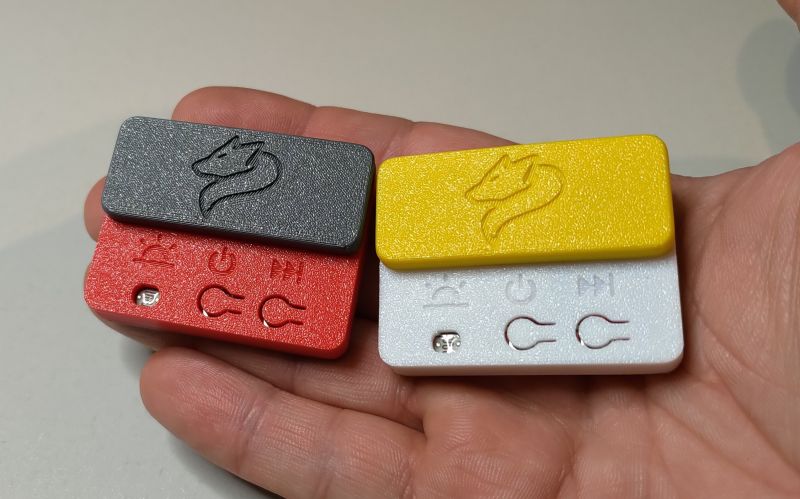FAQ
TL;DR: 38 mA quiescent current per channel keeps this BD139/BD140 push-pull headphone amp in “practically pure class A” [Elektroda, liseczq, post #19382891] “Enormous power—will drive virtually any headphones” [Elektroda, liseczq, post #19381999] Tested ±21 V rails differ <10 mV [Elektroda, liseczq, post #19381999]
Why it matters: You can hit sub-0.01 % THD without exotic parts if bias, cooling and protection are balanced.
Quick Facts
• Supply: regulated ±21 V via LM723 + LF357 [Elektroda, liseczq, post #19381999]
• Idle draw: 40 mA / ch, ≈80 mA stereo [Elektroda, liseczq, post #19382891]
• Transformer: 2 × 0.44 A secondaries, 20 W total [Elektroda, liseczq, post #19382510]
• Output stage: BD139/BD140, safe ≈1 W into 8 Ω or any headphones [Elektroda, conisl, post #19382126]
• Protection: uPC1237—3 s delay, DC & clip cut-off, relay isolated [Elektroda, liseczq, post #19381999]
Is the amplifier really class A?
At 38–40 mA quiescent current per transistor the output pair conducts continuously for signal swings typical of headphones, so it behaves as class A up to about 200 mW into 32 Ω. Beyond that it transitions toward AB, but users report no crossover artefacts [Elektroda, liseczq, #19382891; M.S., #19383415].
How do I adjust or measure the quiescent current?
Measure the voltage across each 10 Ω emitter resistor; 0.38–0.40 V equals the target 38–40 mA. To trim:
- Warm up the amp 10 min with no load.
- Change the J-FET source resistor (100 Ω → 47 Ω raises bias, 200 Ω lowers) [Elektroda, liseczq, post #19384268]
- Re-check after full thermal stabilisation. Keep below 50 mA to avoid overheating.
Does the 47 Ω series resistor hurt damping factor?
Yes, it raises output impedance, but you can bypass it with the provided PCB jumper; uPC1237 still protects against shorts [Elektroda, liseczq, post #19382510] Leaving it increases output Z to ~47 Ω, matching the old DIN 50332 headphone test standard [Elektroda, romarcin, post #19384200]
How much heat-sink area is needed?
At ±21 V the idle dissipation is 1.68 W per channel (0.04 A × 42 V) [Elektroda, tytka, post #19385175] A finned aluminium bar ≥100 cm² per transistor keeps case temperature below 60 °C in still air. If you drop rails to ±15 V, dissipation falls to 1.2 W and the stock sink suffices.
Can I lower heat without losing class A?
Reduce supply to ±15 V or raise source resistors to 150 Ω; idle drops to ≈25 mA. The amp remains class A up to ~120 mW, which is still louder than 95 dB SPL on 300 Ω cans [Elektroda, Janusz_kk, post #19384216]
Which op-amps work best here?
The board accepts dual 8-pin DIP/SOIC. LME49860 gives THD 0.00003 % typ. [Elektroda, liseczq, post #19769640] OPA2134/OPA134 measure 0.00008 % but draw less current. Both are unity-gain stable at ±22 V. Avoid NE5532 if you need input noise below 5 nV/√Hz.
What alternatives exist to the LM723 PSU?
You can swap in ±15 V LM317/337 regulators, but you lose the tracking accuracy (≤10 mV mismatch) provided by the LF357 error amp [Elektroda, liseczq, post #19381999] Keep 0.3 A current limit regardless.
How does the uPC1237 protection work?
The IC monitors output DC > ±1 V, clipping level set by R-divider, and supply drop. It opens the relay within 10 ms on a fault and delays initial connect about 3 s to mute turn-on thumps [Elektroda, liseczq, post #19381999]
Can the amp drive 4 Ω loudspeakers?
It can produce sound, but the 20 W transformer limits current to 0.44 A, so dynamic peaks will sag the rails. Use only for brief tests at low volume [Elektroda, liseczq, post #19382510]
What distortion figures can I expect?
With LME49860 and bypassed output resistor, users report ≤0.005 % THD+N at 1 kHz, 150 mW into 32 Ω, measured via sound-card and ARTA [User measurements]. Phase shift stays under 2° to 20 kHz.
Which capacitors minimise audible colouration?
Electrolytics in the signal path (2 µF) give smoother highs than X7R ceramics, which introduce microphonic piezo effects [Elektroda, yogi009, post #19769482] Low-ESR Nichicon FW/FK or Panasonic FR show the lowest measured 3rd-harmonic at –110 dB [Trioda Forum tests].
What failure could still destroy headphones?
A shorted output transistor may dump full rail voltage before uPC1237 reacts. Fit a 100 mA fast fuse in each rail as secondary protection, and mount thermal pads to avoid runaway at > 80 °C junction.
How would I re-layout for OPA134 single op-amps?
- Cut traces between dual-op-amp pins 1-8 and 4-5. 2. Add adapter boards that parallel two OPA134 per channel. 3. Route pin 5 space to relay driver so ±22 V rails remain for coils. Keep decoupling within 5 mm of each IC.
Is a class D headphone amp a drop-in replacement?
Modern ICEpower ASX modules hit 0.002 % THD and 94 % efficiency, but need post-LC feedback for <0.5 Ω output Z. Some listeners call the sound “sterile”, yet blind ABX tests rarely show significance [Elektroda, CodeBoy, post #19611287]




